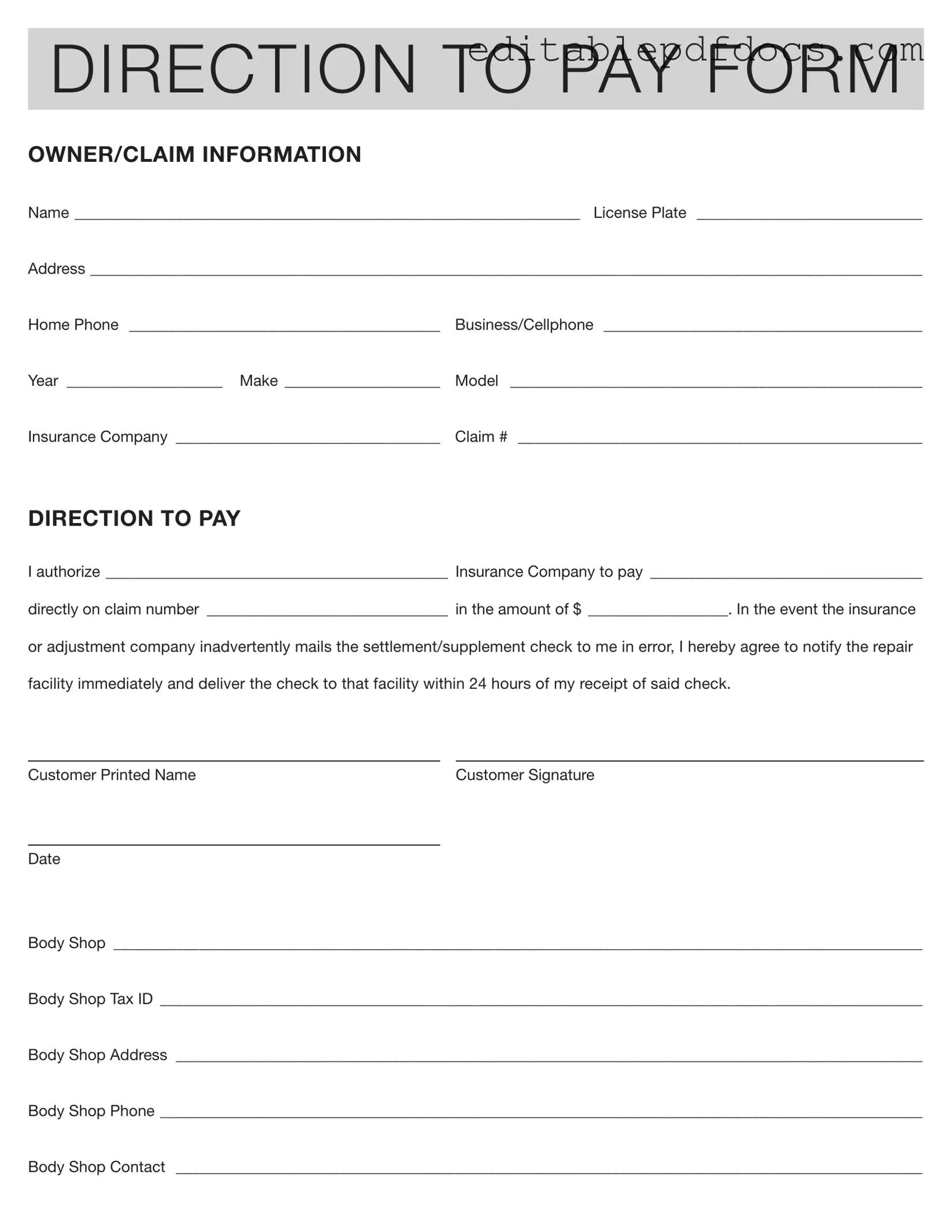The Authorization And Direction Pay form serves a crucial role in the claims process, streamlining the payment procedure between insurance companies and repair facilities. It is designed for individuals who need to direct their insurance company to pay a specific body shop directly, rather than receiving the funds themselves. The form collects essential information such as the owner's name, contact details, and vehicle specifics, including the license plate, make, model, and year. Additionally, it requires the insurance company's name and claim number, ensuring that all parties are accurately identified. By signing this form, the owner authorizes the insurance company to issue payment directly to the designated repair facility, thus facilitating a smoother transaction. The form also includes a stipulation that if a check is mistakenly sent to the owner, they must promptly notify the repair shop and deliver the check within 24 hours. This provision helps maintain transparency and ensures that the repair facility receives the necessary funds to begin work on the vehicle without unnecessary delays. Overall, the Authorization And Direction Pay form is an important tool that helps protect the interests of both the vehicle owner and the repair facility, ensuring a more efficient claims experience.
